SMART & SIMPLE Journal Management
July 18, 2025
The SMART & SIMPLE Journal Management webinar was successfully held on July 18, 2025. This event was organised by Research Synergy Foundation in collaboration with Research Synergy Press, and co-organised by Northwestern University, The Philippines (NWU) and St. Vincent’s College Incorporated (SVCI). Conducted entirely online, the event gathered 27 participants from various academic institutions, aiming to enhance their understanding and capacity in managing academic journals effectively.
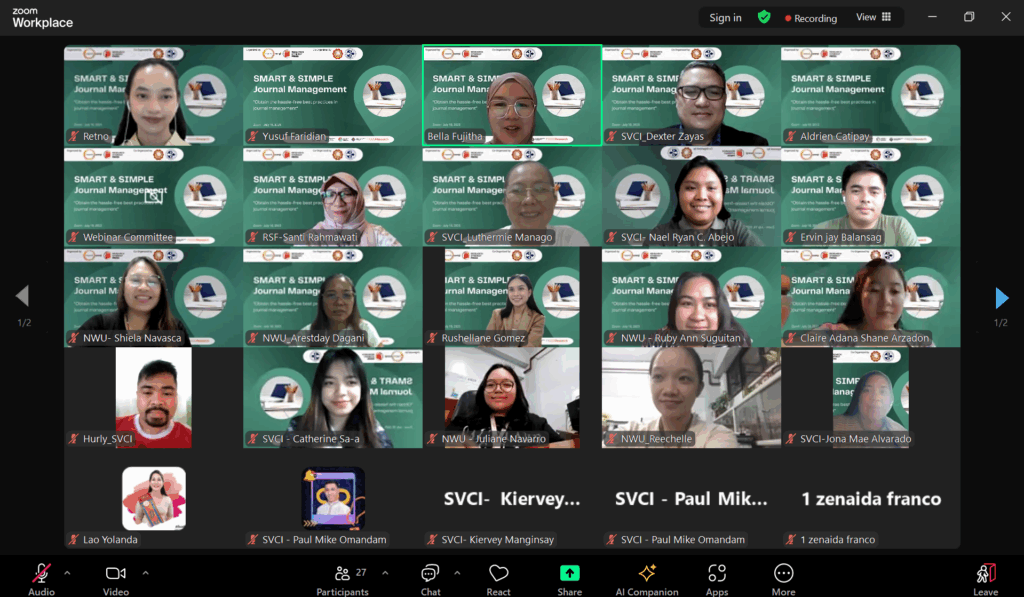
The event opened with welcoming remarks delivered by Dr. Eric S. Parilla, M.Sc.M., D.B.A., F.B.E., Vice President for Research, Community, Social Development, and Internationalization at Northwestern University, The Philippines. His opening remarks set a warm and engaging tone for the entire session.
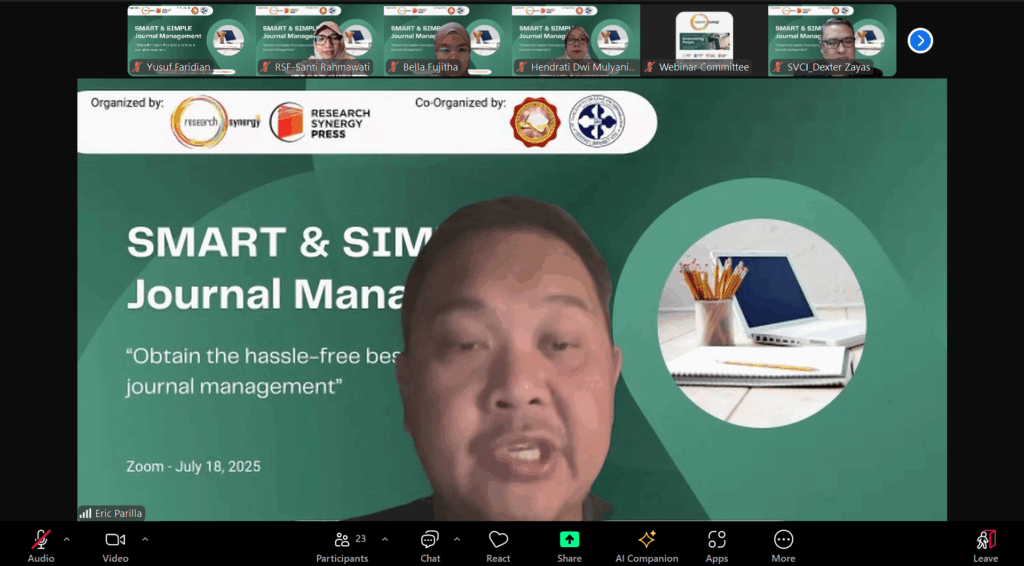
The next session is led by Dr. Hendrati Dwi Mulyaningsih, Founder and CEO of the Research Synergy Foundation, who will introduce the RSF Global Research Ecosystem—designed to cultivate an inclusive and collaborative research environment worldwide
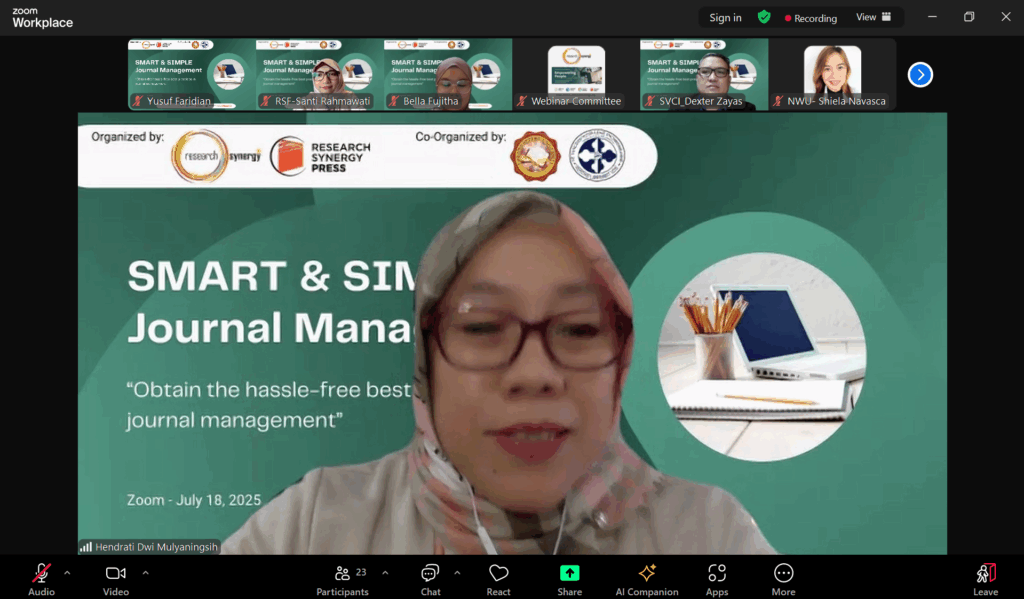
Next, the webinar proceeded to its main agenda. The session featured Widyoretno Adiani, S.Si., M.S.M., the Coordinator of Managing Editors at Research Synergy Press, as the main speaker. She brought valuable insights into the journal publishing ecosystem, sharing her expertise on the essential components of successful and sustainable journal management. The discussion was structured into three main parts: What you need to manage a journal, How to create a smooth, effective publishing workflow, and How to make your journal sustain.
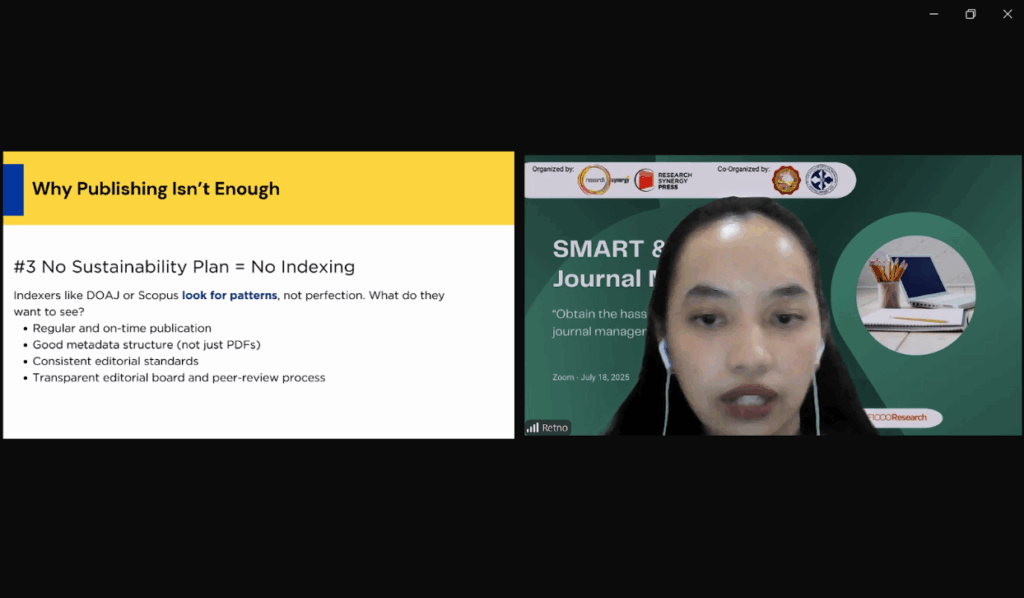
In the first part, “What You Need to Manage a Journal”, Widyoretno emphasized the importance of understanding internal journal roles, developing the required skills for each role, and being aware of common technical issues, particularly those related to the Open Journal System (OJS). Managing a journal is not simply about assigning tasks but requires a clear comprehension of editorial structures, responsibilities, and the ability to respond to common operational challenges.
The second segment focused on building a smooth and effective publishing workflow. Widyoretno outlined the practical steps necessary to maintain consistency and quality in journal publishing. These include issuing a call for papers, assigning peer reviewers, making editorial decisions and conducting follow-ups, layouting accepted articles, and finally publishing and announcing the new issue. For institutions or editorial teams just starting out, she advised beginning with a minimal number of papers per issue but ensuring each step is executed professionally.
She also identified common causes of failure in journal operations. Among these were the lack of clearly defined roles and responsibilities, absence of a documented workflow or checklist, and low technical confidence, particularly in managing OJS platforms. Additionally, she pointed out the real risks of burnout and volunteer fatigue among editorial teams, as well as the pressure to publish quickly, even when editorial processes are not well-established.
In the final section of the session, “How to Make Your Journal Sustain”, Widyoretno addressed the broader picture of journal longevity. Sustainability, she stressed, is not merely about uploading issues regularly—it’s about ensuring that readers can find and trust the content, authors feel confident and motivated to submit again, and editorial teams can realistically commit to continuing their work into the future. This holistic approach to sustainability underscores the need for strong systems, team resilience, and strategic planning in scholarly publishing.
After Widyoretno shared her expertise, participants had the opportunity to engage directly in a lively Q&A session. One of the questions raised during the session was:
“What are effective strategies for journals with few submissions, especially in the first issue? How can we attract more diverse authors?”
Widyoretno shared three key strategies in response:
- Leverage Existing Networks
Start with people you know—editorial board, reviewers, or institutional partners. Since there’s no indexation or publication history yet, authors rely on trust in the people behind the journal. - Targeted Outreach
Email individuals who manage research communities (not general mailing lists), both locally and internationally. You can also offer small benefits to encourage institutional or community support. - Clear Journal Information
Make sure the journal’s aims, review process, timelines, accepted article types, and basic requirements are clearly communicated. This helps attract not just more, but better-quality and more diverse submissions.
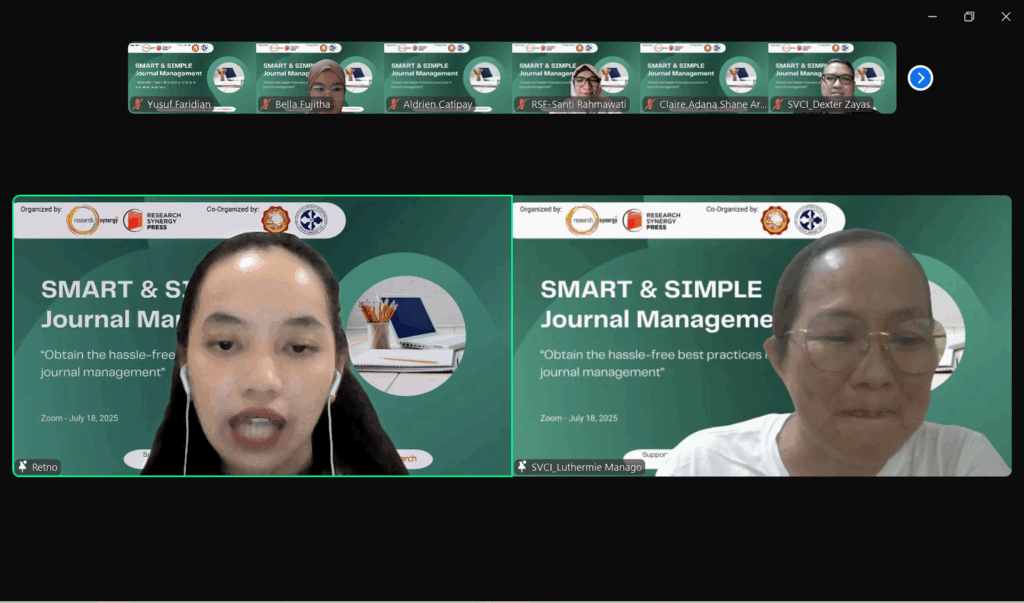
The webinar concluded with this insightful exchange, providing participants with actionable advice and strategic perspectives. The event successfully created a platform for capacity building, knowledge exchange, and collaborative learning among journal managers, editors, and academic professionals from different backgrounds. To formally close the session, Closing Remarks were delivered by Prof. Dexter E. Zayas, M.B.A., Program Head of the Master in Public Management at St. Vincent’s College Incorporated, Philippines.
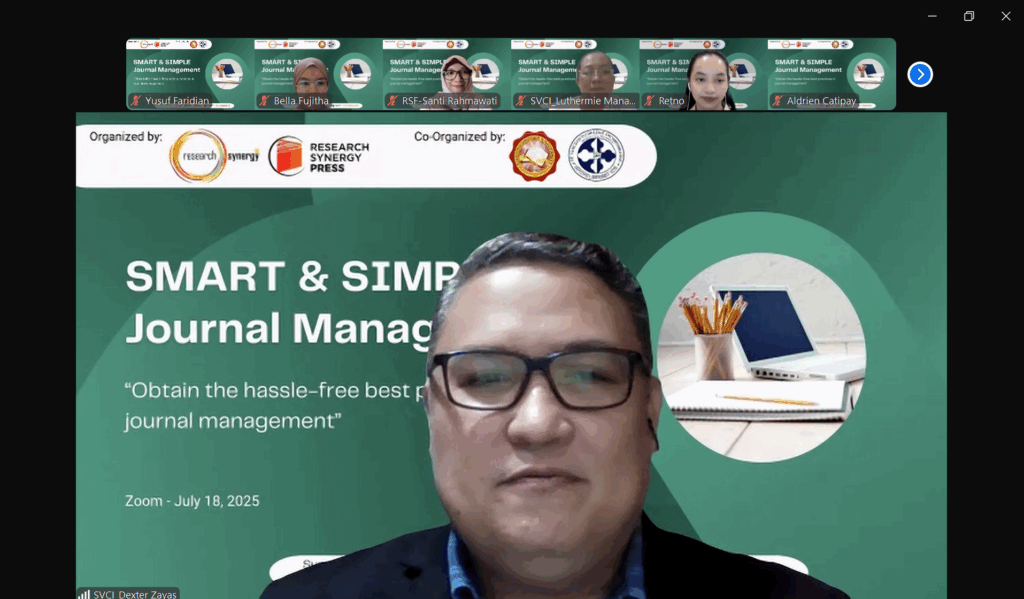
Through SMART & SIMPLE Journal Management, Research Synergy Foundation continues its commitment to empowering academic communities in strengthening the quality and impact of scholarly publications across disciplines and regions. Don’t miss the next webinar on journal indexation, which will be held on August 20, 2025, a great opportunity to deepen your understanding of how to increase journal visibility and credibility.

